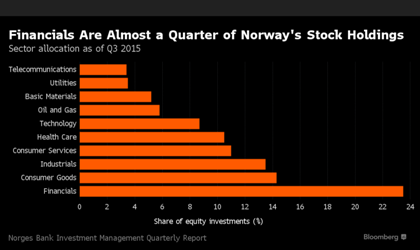For banks, the recent news is pretty grim. But it’s about to get much worse, based on the following:
Yield Curve Flattens: Now 10-Year Yields Just 1% More than 2-Year
(Barrons) – Ye olde yield curve keeps getting flatter. Wednesday continued the trend — which is most pronounced between two and 10-year maturities. At 2:30 p.m., the two-year note was at .71%, 1.6 basis points higher than Tuesday’s close, while the 10-year was 2 basis points lower at 1.71%.
That’s just 1 percentage point of spread between the two-year and ten-year Treasury notes.
Peter Boockvar of The Lindsey Group says this flattening is “the most noteworthy event” in the bond market in the past week. He believes investors are saying something about the U.S. economy. He said of the 2s/10s spread:
It is down from 103 bps yesterday, 108 bps the day before and versus 116 bps just one week ago. There is no question that the longer end of the curve has gotten a firm bid from the spillover effect from the continued easing in Japan and soon to be more from the ECB and the crushing of yields those regions have seen but I believe it is also a message from market participants of how they feel about the US economy.
A flattening yield curve squeezes bank profits, making an already tough environment even tougher. And that’s before the mountain of dicey paper (issued in more innocent times) starts blowing up. See:
Is the market in European Coco bonds about to pop?
Liquidity woes hit non-energy junk bond issuers
Move over Greece, it’s Italy’s turn – George Friedman sounds the alarm on European banking crisis
All this stress and complexity is being reflected in bank share prices this morning:

But it gets even more complex and stressful when you consider who owns these suddenly-imploding equities:
The Crowded Trade in Bank Stocks Among Oil-Rich Countries
(Bloomberg) – When it comes to the selloff in bank stocks, there’s plenty to blame: credit concern, earnings, negative interest rates, and souring sentiment.
Another theory: Burned by the rout in crude, oil-rich nations have been pressured to dump their shares. What do such funds, which make up about 5 percent to 10 percent of global assets, count among their biggest holdings? Financial firms.
Take the Gulf states:

And while the world’s biggest sovereign wealth fund has said it’s sitting out the selloff, it also has a sizable exposure to banks:

“Just because of the sheer size of their portfolios, and the proportion of their holdings in the financial sector, things would get even worse if sovereign wealth funds need to cut their exposure,” said Peter Garnry, head of equity strategy at Saxo Bank A/S in Copenhagen.












Leave A Comment